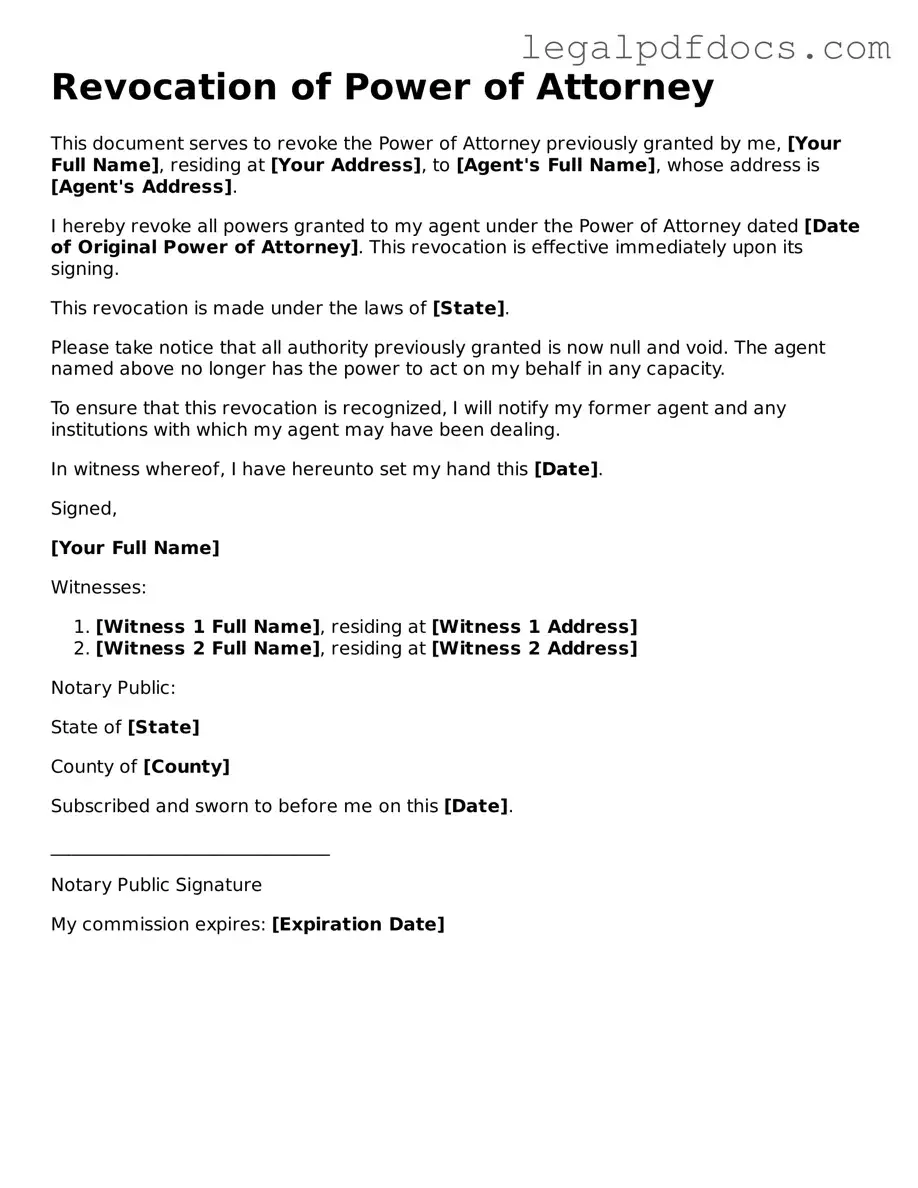The Revocation of Power of Attorney form serves as a crucial tool for individuals who wish to terminate the authority previously granted to another person, known as the agent or attorney-in-fact. This form is essential in situations where the principal— the person who initially appointed the agent—decides to reclaim control over their affairs, whether due to a change in circumstances, a loss of trust, or simply a desire to appoint a different agent. By completing and submitting this form, the principal effectively communicates their decision to revoke the agent's powers, ensuring that the agent no longer has the legal authority to act on their behalf. It is important to understand that the revocation process must be executed properly to be legally binding; this includes notifying the agent and any relevant third parties, such as financial institutions or healthcare providers, of the change. Additionally, the form may need to be notarized or witnessed, depending on state laws, to ensure its validity. Understanding the implications of revoking a power of attorney can provide peace of mind, allowing individuals to make informed decisions about their legal and financial matters.
